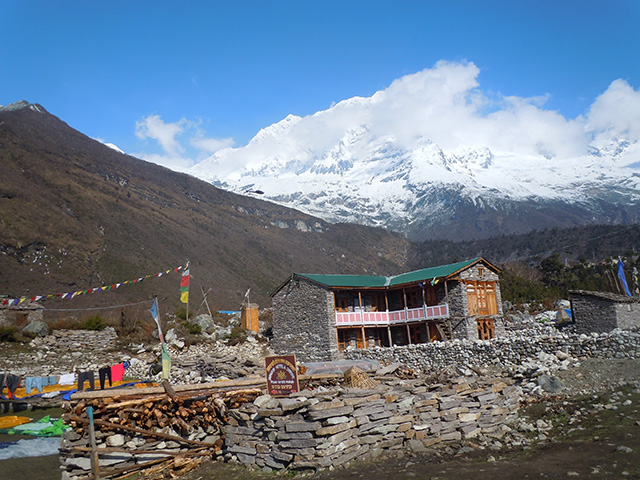Assessment of Current Energy Consumption Practices, Carbon Emissions and Indoor Air Pollution in Samagaun, Manaslu Conservation Area, Nepal
Main Article Content
Abstract
Nepal is one of the lowest energy consuming countries in the world. More than 85 percent of its total energy comes from traditional biomass energy such as forests, agricultural residues and by-products from crops. Due to increasing per capita energy consumption, natural resources are being depleted with heavy emissions of GHGs in the atmosphere, which causes global warming. The main objective of the study was to investigate current energy consumption practices, to estimate particulate matter and carbon emissions from current practices and to recommend the most suitable alternative energy technologies. The fieldwork was based on primary and secondary data with a design methodology. Firewood burning was found to be the major source of energy used for cooking purposes in Samagaun. The use of this traditional fuel has negative environmental implications, such as deforestation, indoor air pollution and it ultimately affects human health. The results show that traditional cooking stoves (TCS) are used more than improved cooking stoves (ICS). The total amount of firewood used per day by TCS is 2135 kg/day, and by ICS it is 349 kg/day. The average amount of firewood consumed by traditional and improved cooking stoves per day is 62.79 kg and 43.63 kg, respectively. The annual per capita firewood consumption of TCS and ICS is 4401.9 kg and 3266.7 kg, respectively. The calculation shows that per capita firewood consumption by TCS users is 1.3 times higher than that of ICS users. The annual per capita carbon emissions from TCS and ICS is 8055.47 kg CO2e and 5978.15 kg CO2e, respectively. This calculation shows that ICS emits 1.3 times less CO2 into the atmosphere than the TCS. The average mean particulate concentration at normal atmospheric conditions for a traditional cooking stove was found to be 2866 μg/Nm3 and for an improved cooking stove 1333 μg/Nm3, both of which far exceed the national standard of 230 μg/m3 TSP. Based on the study results, metallic improved cooking stoves could be recommended as the best alternative energy technology in the study area.
Article Details
Issue
Section

This work is licensed under a Creative Commons Attribution-NonCommercial-NoDerivatives 4.0 International License.

